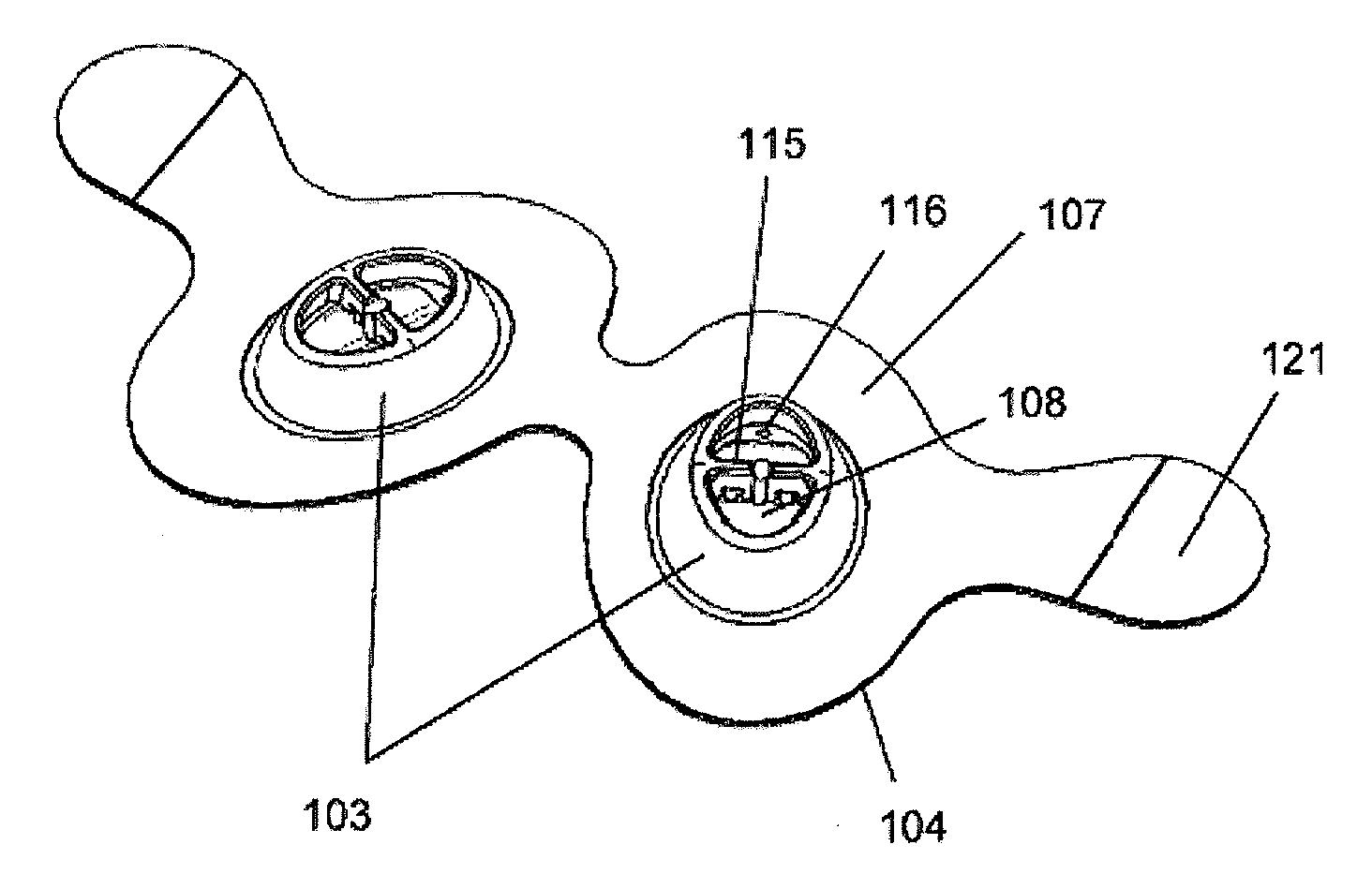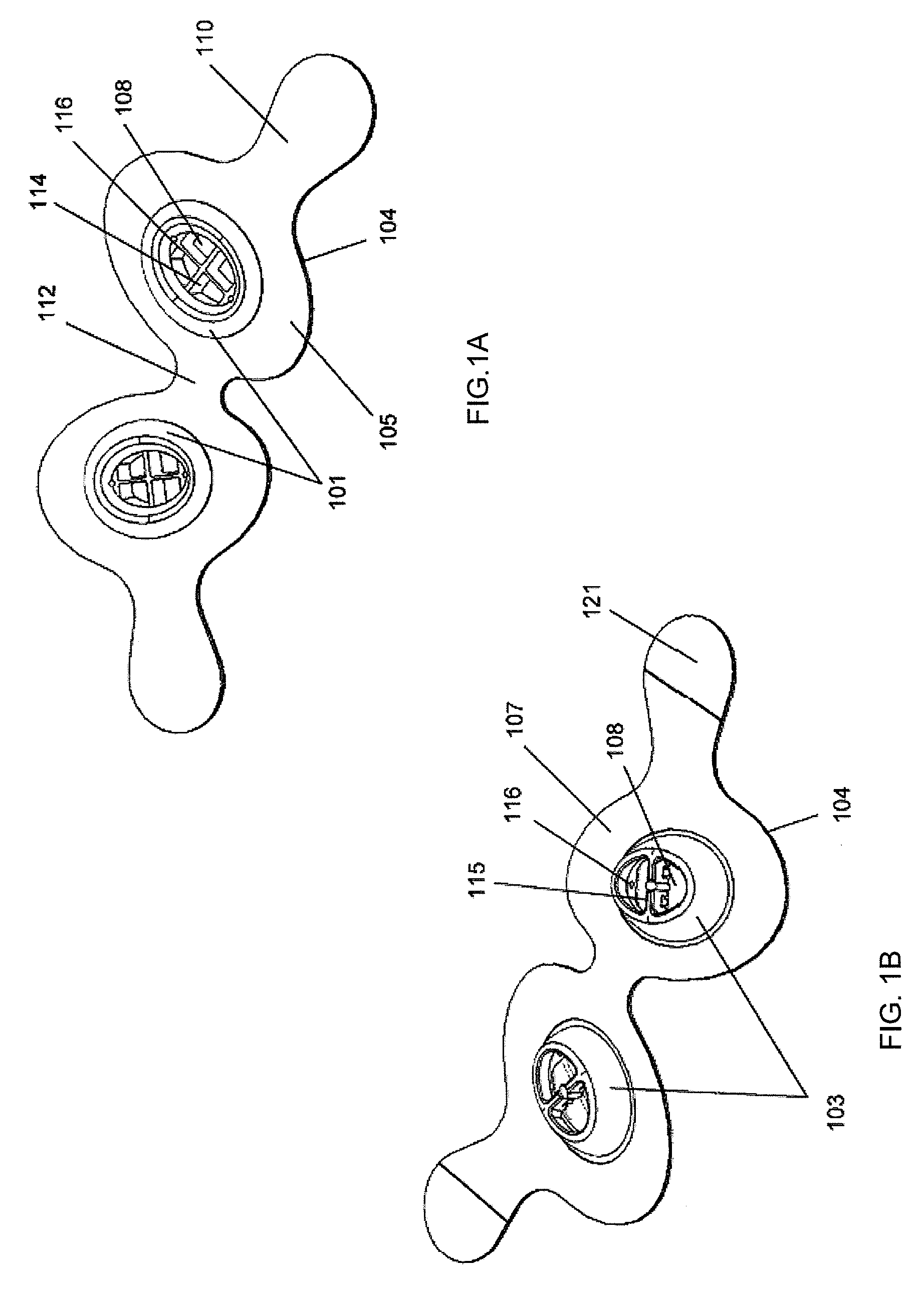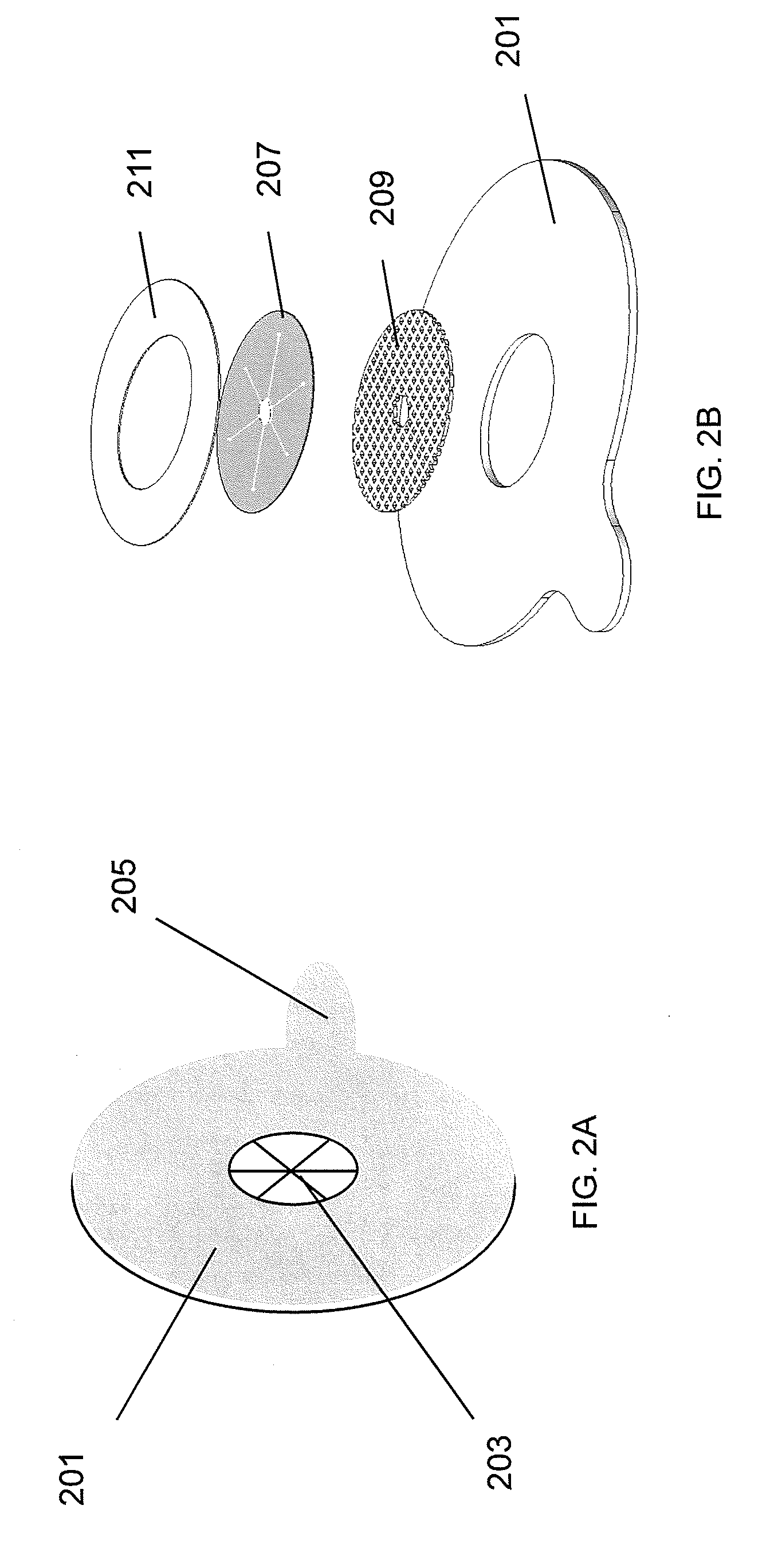Nasal devices with noise-reduction and methods of use
a nasal device and noise reduction technology, applied in the field of nasal devices with noise reduction and methods of use, can solve the problems of user noise, user discomfort, nasal device including one or more flap valves, etc., and achieve the effects of reducing the sound of the flap valve opening/closing, reducing the noise of the nasal device, and eliminating unwanted noises
- Summary
- Abstract
- Description
- Claims
- Application Information
AI Technical Summary
Benefits of technology
Problems solved by technology
Method used
Image
Examples
Embodiment Construction
[0056]Described herein are noise-reduced nasal devices. Noise-reduced nasal devices typically include a noise-reduced feature such as a noise-reduction flap for a flap valve, a noise-reduction element, or both. The noise-reducing features described are configured as part of the nasal device so that the resistance to exhalation and inspiration of the nasal devices is typically between about 0.01 and about 0.25 cm H2O / (ml / sec) for exhalation and between about 0.0001 and about 0.02 cm H2O / (ml / sec) for inspiration when resistance is measured at 100 ml / sec. Inspiratory resistance or resistance to inhalation, refers to the resistance to airflow moving though the device in the direction of inhalation when the device is oriented as it would be when worn by a user. Likewise, expiratory resistance or resistance to exhalation refers to the resistance to airflow through the device in the direction of exhalation when the device is oriented as it would be when worn by a user.
[0057]As used herein,...
PUM
 Login to View More
Login to View More Abstract
Description
Claims
Application Information
 Login to View More
Login to View More - R&D
- Intellectual Property
- Life Sciences
- Materials
- Tech Scout
- Unparalleled Data Quality
- Higher Quality Content
- 60% Fewer Hallucinations
Browse by: Latest US Patents, China's latest patents, Technical Efficacy Thesaurus, Application Domain, Technology Topic, Popular Technical Reports.
© 2025 PatSnap. All rights reserved.Legal|Privacy policy|Modern Slavery Act Transparency Statement|Sitemap|About US| Contact US: help@patsnap.com



